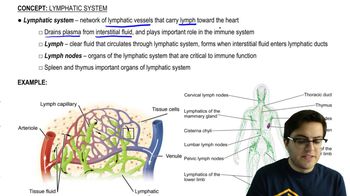Textbook Question
Trace the path of blood starting in a pulmonary vein, through the heart, and around the body, returning to the pulmonary vein. Name, in order, the heart chambers and types of vessels through which the blood passes.
1988
views
 Verified step by step guidance
Verified step by step guidance Verified video answer for a similar problem:
Verified video answer for a similar problem:



 6:28m
6:28mMaster Gas Exchange and Circulation with a bite sized video explanation from Jason
Start learning